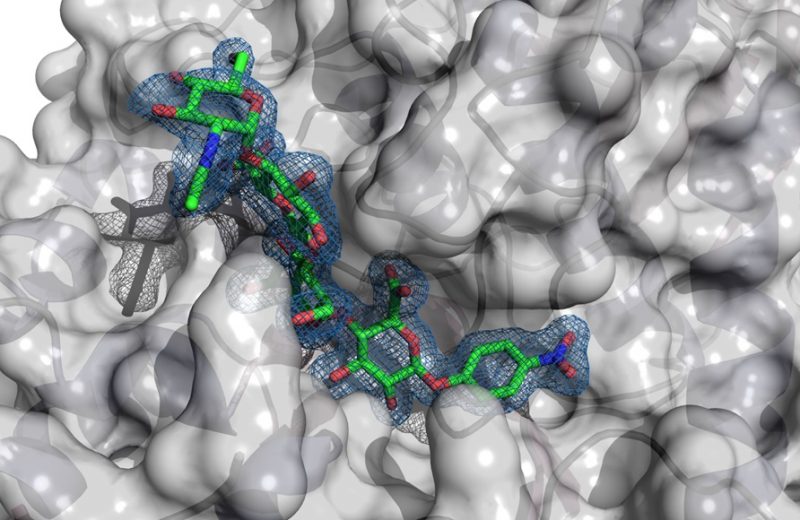Heparan Sulfate Biosynthesis
Heparan Sulfate Biosynthesis
Heparan sulfates (HS) are essential for life. Found around every human cell, these complex polysaccharides mediate a diverse range of structural and signalling interactions between cells and the extracellular matrix.
HS plays roles in physiological processes as varied as growth factor signalling; embryonic development; cell-cell interactions; maintenance of epithelial barrier function; and endocytosis of ligands and viruses.
Aberrations in HS regulation are linked to pathologies such as hereditary multiple exostoses (HME) – a congenital disorder characterised by the growth of cartilaginous tumours on bone surfaces – as well as the promotion of cancer growth through increased angiogenesis and growth factor signalling. HS is therefore intimately connected with human health.
Despite its importance, very little is known about HS biosynthesis: specifically, how the many enzymes involved in HS production co-operate with each other to form functional polysaccharides.

This project will establish a molecular understanding of HS biosynthesis, making use of state-of-the-art X-ray crystallography, cryo-EM and tomographic imaging technologies available at the Rosalind Franklin Institute, using both in vitro and living-cell approaches carried out over five years. Questions addressed will include how HS biosynthesis enzymes function individually, how different HS biosynthesis enzymes work together in larger complexes, and how the composition of these complexes changes in aberrant disease states.
Given the broad range of roles performed by HS, opportunities for biomedical and biotechnological exploitation are myriad. Improved characterisation of the biosynthetic production mechanisms associated with HS will provide important insights into how and why they go wrong, opening the possibility of correcting regulation aberrations to help treat HS-related disorders such as HME and cancers. HS-containing biomaterials have also shown considerable promise in wound healing and tissue engineering applications. A better molecular understanding of HS production will inform improved methods to produce novel HS-based biomaterials for these and other applications.